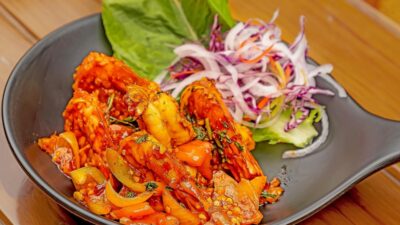In the vibrant culinary landscape of Japan, few dishes evoke as much passion and devotion as ramen. From humble beginnings as a street food staple to its status as a global phenomenon, ramen represents more than just a meal; it embodies a cultural revolution that captures the heart and soul of Japanese comfort food.
A Brief History of Ramen
While the exact origins of ramen are often debated, it is widely accepted that Chinese immigrants brought noodle soups to Japan in the late 19th century. These early dishes evolved into what we now recognize as ramen by the early 20th century. One of the first ramen shops, "Ramen Alley" in Yokohama, opened in 1910, setting the stage for a culinary trend that would spread rapidly across the country.
Post-World War II, Japan faced scarcity and hardship, leading to an uptick in ramen’s popularity due to its affordability and accessibility. Instant ramen, introduced by Momofuku Ando in 1958, further revolutionized the dish, making it a staple not only in Japan but also around the world.
The Anatomy of Ramen
At its core, ramen is a flavorful, hearty noodle soup typically consisting of four primary components: broth, noodles, tare (a seasoning mixture), and toppings. The variety found within these components is staggering, with each region of Japan contributing its unique twist.
Broth
The heart of any great ramen is the broth, which can be classified into several categories:
- Shoyu: A soy sauce-based broth, usually brown and complex in flavor.
- Shio: A salt-based broth, lighter and clearer, celebrated for its delicate taste.
- Miso: A rich, fermented soybean paste that gives the broth a hearty, umami flavor.
- Tonkotsu: A creamy, pork bone broth that is rich and indulgent, known for its hearty mouthfeel.
Noodles
Ramen noodles vary in texture, thickness, and ingredients. They can be straight or curly and are made from wheat flour, water, salt, and kansui—an alkaline mineral water that gives the noodles their characteristic chewiness. Different styles of ramen often call for specific noodle types, enhancing the overall eating experience.
Tare and Toppings
Tare adds depth to the broth, with combinations ranging from simple soy sauce to more complex blends of miso and oil. Toppings can vary widely, but some classics include chashu (braised pork belly), menma (bamboo shoots), soft-boiled eggs, green onions, and nori (seaweed).
Ramen Around Japan
Japan’s diverse regions contribute to a rich tapestry of ramen styles. For instance:
- Hakata Ramen: Originating from Fukuoka, this tonkotsu ramen is known for its rich, buttery broth and thin, straight noodles.
- Sapporo Ramen: From Hokkaido, this style features a miso-based broth and is often topped with sweet corn and butter, reflecting the region’s agriculture.
- Tokyo Ramen: Characterized by a shoyu-based broth, this style often includes a mix of toppings, making it a versatile favorite among locals.
The Ramen Culture
Ramen isn’t just about the food; it’s a cultural phenomenon that brings people together. Ramen shops, or "ramen-ya," are often bustling social hubs, filled with the sound of slurping noodles and the aroma of broth. It’s common for diners to enjoy a bowl solo, or with friends, fostering a sense of community and shared experience.
Ramen chefs, or “ramen master,” are celebrated artisans who dedicate years to perfecting their craft. Many have their signature style or secret broth recipe, leading to local favorites and hidden gems across the country.
The Global Impact of Ramen
The ramen revolution extends beyond Japan’s borders, influencing culinary scenes worldwide. Major cities like New York, Los Angeles, and London boast ramen shops that offer both traditional and unique fusion dishes. Food festivals and ramen pop-ups have also become popular, introducing new generations to the joys of this beloved dish.
The rise of social media has played a significant role in ramen’s global popularity. Photogenic bowls of ramen flood platforms like Instagram, drawing in hungry food enthusiasts eager to experience their own noodle adventure.
Conclusion
Ramen is more than just a bowl of noodles; it represents a culinary dialogue that spans time and culture. Its ability to adapt and resonate with people worldwide speaks to the power of comfort food in fostering connections. Whether you enjoy it traditionally or explore innovative twists, ramen continues to embody the spirit of Japan—simple yet profound, humble yet luxurious. So, grab your chopsticks and immerse yourself in the ramen revolution; it’s a journey of flavors that promises to warm your heart and fill your soul.



